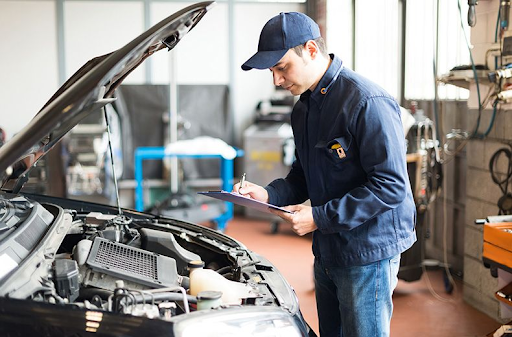Maintaining a reliable water system in your RV or marine setup is essential for a comfortable and worry-free journey. One key component that ensures your water system operates smoothly is the Dometic Stowaway Flow Switch. This article provides a comprehensive overview of the Dometic Stowaway Flow Switch, covering its features, benefits, installation process, troubleshooting tips, and maintenance guidelines. Whether you’re new to RV maintenance or looking to upgrade your current system, this guide will help you understand why the Dometic Stowaway is a valuable addition to your mobile living setup.
Table of Contents
ToggleWhat is the Dometic Stowaway Flow Switch?
The Flow Switch is a device designed to monitor the flow of water within your RV or marine water systems. It detects the movement of water, ensuring that pumps and other components operate only when necessary. By doing so, it helps prevent potential issues such as pump damage, leaks, and system malfunctions, enhancing the overall reliability of your water system.
Key Features of the Dometic Stowaway Flow Switch
Understanding the features of the Dometic Flow Switch can help you appreciate its role in maintaining your water system:
High Sensitivity Detection
- Detects even minimal water flow
- Ensures timely response to changes in the system
Durable Construction
- Made with high-quality materials
- Withstands vibrations and temperature changes typical in mobile environments
Easy Installation
- Designed for straightforward integration
- No need for specialized tools or expertise
Versatile Compatibility
- Works with various Dometic water pumps
- Compatible with other brands, offering flexibility in different setups
Reliable Performance
- Consistent operation reduces the risk of unexpected system failures
Compact Design
- Small size allows for easy placement in tight spaces within RVs and boats
Benefits of the Dometic Stowaway Flow Switch
Incorporating the Dometic Stowaway Flow into your water system offers numerous advantages:
Prevents Pump Damage
- Ensures the pump operates only when water is flowing
- Prevents dry running, which can cause pump damage
Detects Leaks Early
- Identifies unusual flow patterns indicating leaks
- Allows for prompt repairs, minimizing water loss
Enhances Energy Efficiency
- Optimizes pump operation
- Reduces energy consumption, extending battery life in off-grid setups
Protects the System
- Safeguards against overflows and other malfunctions
- Enhances the longevity of your water system
Provides Peace of Mind
- Ensures your water system is monitored effectively
- Essential for long trips or remote stays
Installation of the Dometic Stowaway Flow Switch
Installing the Dometic Stowaway Flow Switch is manageable for most DIY enthusiasts. Follow these steps for a successful installation:
Tools and Materials Needed
- Stowaway Flow Switch
- Pipe cutter or drill
- Teflon tape
- Hose clamps
- Screwdrivers
- Waterproof connectors (if necessary)
Step-by-Step Installation
- Turn Off the Water Supply
- Prevent leaks or spills by ensuring the water supply is off.
- Choose the Installation Location
- Select a spot in the water line where the flow switch can accurately detect water movement, typically near the pump or water heater.
- Cut the Water Line
- Carefully cut the water line at the chosen location using a pipe cutter or drill, depending on your system’s requirements.
- Attach the Flow Switch
- Connect the flow switch to the cut ends of the water line.
- Use Teflon tape on threaded connections to ensure a watertight seal.
- Secure the Connections
- Use hose clamps to firmly secure the flow switch in place, preventing movement that could disrupt its operation.
- Reconnect the Water Supply
- Turn the water supply back on and check for any leaks around the installation area.
- Test the Flow Switch
- Activate the water system and observe the flow switch’s response.
- Ensure it correctly signals the pump or other components based on water flow.
Troubleshooting the Dometic Stowaway Flow Switch
Even with reliable components like the Dometic Stowaway Flow Switch, issues can arise. Here are some common problems and their solutions:
Flow Switch Not Activating
Possible Causes:
- Blocked or clogged sensor
- Incorrect installation
- Faulty switch
Solutions:
- Inspect and clean the flow switch sensor.
- Verify that installation steps were followed correctly.
- Test the switch with a multimeter; replace if faulty.
False Activation
Possible Causes:
- Debris in the water causing erratic flow readings
- Electrical interference
Solutions:
- Ensure the water line is clean and free from debris.
- Use shielded wiring to minimize electrical interference.
Leaks Around the Flow Switch
Possible Causes:
- Loose connections
- Damaged seals or O-rings
Solutions:
- Tighten all connections securely.
- Replace any damaged seals or O-rings.
Inconsistent Flow Detection
Possible Causes:
- Varying water pressure
- Improper placement within the water line
Solutions:
- Install a pressure regulator if pressure fluctuations are significant.
- Reposition the flow switch to a more stable section of the water line.
Maintenance Tips for the Dometic Stowaway Flow Switch
To ensure your Dometic Stowaway Flow Switch remains in optimal condition, follow these maintenance tips:
- Regular Cleaning
- Periodically clean the flow sensor to prevent debris buildup.
- Check Connections
- Inspect all connections for signs of wear or leaks.
- Monitor Performance
- Keep an eye on the flow switch’s operation, especially before long trips.
- Replace When Necessary
- If persistent issues occur, consider replacing the flow switch to avoid system damage.
Detailed Information Summary
| Feature | Description |
| High Sensitivity | Detects minimal water flow for timely system responses |
| Durable Construction | Built to withstand vibrations and temperature changes |
| Easy Installation | Simple integration without specialized tools |
| Versatile Compatibility | Works with various Dometic and other brand water pumps |
| Reliable Performance | Consistent operation reduces system failure risks |
| Compact Design | Fits easily in tight spaces within RVs and boats |
Why Choose the Dometic Stowaway Flow Switch?
Choosing the Dometic Stowaway Flow Switch offers several benefits:
- Reliability
- Proven performance backed by years of industry experience.
- Support
- Access to customer service and technical support for installation or operational questions.
- Integration
- Seamless compatibility with other Dometic products, creating a cohesive and efficient water system.
Conclusion
The Dometic Stowaway Flow Switch is an essential component for anyone relying on RV or marine water systems. Its ability to monitor water flow accurately, combined with its durable and user-friendly design, makes it a valuable addition to your mobile living setup. By preventing pump damage, detecting leaks early, and enhancing energy efficiency, the flow switch ensures your water system operates smoothly and reliably. Proper installation and regular maintenance will extend the lifespan of your flow switch and overall water system, providing peace of mind during your travels. Choose the Dometic Stowaway Flow Switch to enhance the performance and reliability of your RV or marine water systems.
Frequently Asked Questions
1. What is the Dometic Stowaway Flow Switch and how does it work?
The Dometic Stowaway Flow Switch is a device designed to monitor the flow of water within RV and marine water systems. It detects the movement of water, ensuring that pumps and other components operate only when necessary. When water flows through the system, the flow switch activates the pump, and when the flow stops, it deactivates the pump. This mechanism helps prevent issues such as pump damage from dry running, leaks, and system malfunctions, thereby enhancing the overall reliability and efficiency of your water system.
2. How do I install the Dometic Stowaway Flow Switch in my RV?
Installing the Dometic Stowaway Flow Switch in your RV is a straightforward process that most DIY enthusiasts can handle. Here are the basic steps:
- Turn Off the Water Supply: Ensure that the water supply is completely shut off to prevent any leaks or spills during installation.
- Select the Installation Location: Choose a spot in the water line where the flow switch can accurately detect water movement, typically near the pump or water heater.
- Cut the Water Line: Carefully cut the water line at the chosen location using a pipe cutter or drill, depending on your system’s requirements.
- Attach the Flow Switch: Connect the flow switch to the cut ends of the water line. Use Teflon tape on threaded connections to ensure a watertight seal.
- Secure the Connections: Use hose clamps to firmly secure the flow switch in place, preventing any movement that could disrupt its operation.
- Reconnect the Water Supply: Turn the water supply back on and check for any leaks around the installation area.
- Test the Flow Switch: Activate the water system and observe the flow switch’s response to ensure it correctly signals the pump or other components based on water flow.
Following these steps will help you successfully install the Dometic Stowaway Flow Switch and ensure your water system operates efficiently.
3. What are the common issues with the Dometic Stowaway Flow Switch and how can I troubleshoot them?
While the Dometic Stowaway Flow Switch is a reliable component, some common issues may arise:
- Flow Switch Not Activating:
- Causes: Blocked or clogged sensor, incorrect installation, or a faulty switch.
- Solutions: Inspect and clean the flow switch sensor, verify the installation steps, and test the switch with a multimeter. Replace the switch if necessary.
- False Activation:
- Causes: Debris in the water causing erratic flow readings or electrical interference.
- Solutions: Ensure the water line is clean and free from debris. Use shielded wiring to minimize electrical interference.
- Leaks Around the Flow Switch:
- Causes: Loose connections or damaged seals/O-rings.
- Solutions: Tighten all connections securely and replace any damaged seals or O-rings.
- Inconsistent Flow Detection:
- Causes: Varying water pressure or improper placement within the water line.
- Solutions: Install a pressure regulator if there are significant pressure fluctuations and reposition the flow switch to a more stable section of the water line.
By addressing these issues promptly, you can maintain the effectiveness of your Dometic Stowaway Flow Switch and ensure your water system remains reliable.
4. How does the Dometic Stowaway Flow Switch improve energy efficiency in my water system?
The Dometic Stowaway Flow Switch enhances energy efficiency in your water system by optimizing the operation of your water pump. Here’s how it works:
- Pump Activation Only When Needed: The flow switch ensures that the water pump operates only when there is actual water flow. This prevents the pump from running unnecessarily, reducing energy consumption.
- Prevents Dry Running: By stopping the pump when there is no water flow, the flow switch prevents the pump from running dry, which can cause excessive energy use and potential damage to the pump.
- Extends Battery Life: In off-grid setups, reducing the pump’s operational time helps conserve battery power, extending the overall battery life and ensuring you have power available for other essential systems.
Overall, the Dometic Stowaway Flow Switch contributes to a more efficient and sustainable water system by managing pump activity based on real-time water flow.
5. Can the Dometic Stowaway Flow Switch be used with other brands of water pumps?
Yes, the Dometic Stowaway Flow Switch is designed to be versatile and compatible with various water pump brands. While it works seamlessly with Dometic water pumps, its design allows it to integrate with other brands as well. This flexibility makes the flow switch a suitable choice for different RV and marine water system setups. However, it is always recommended to check the specifications and compatibility of the flow switch with your specific water pump model to ensure optimal performance.






